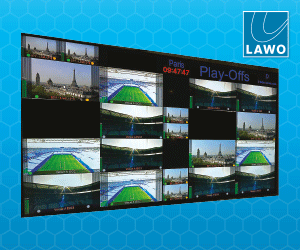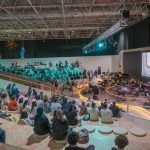Broadcast technology professionals received a personalised view of the latest developments in cloud and connected content technologies across two days at the first IBC London Technology Booster conference held on June 25 and 26. Bringing the event to a close, IBC Technology Booster Chairman, Professor David Crawford said: We have challenged the classic conference model […]
 Broadcast technology professionals received a personalised view of the latest developments in cloud and connected content technologies across two days at the first IBC London Technology Booster conference held on June 25 and 26.
Broadcast technology professionals received a personalised view of the latest developments in cloud and connected content technologies across two days at the first IBC London Technology Booster conference held on June 25 and 26.
Bringing the event to a close, IBC Technology Booster Chairman, Professor David Crawford said: We have challenged the classic conference model with its one-way delivery from speaker to delegate, by staging a new form of interactive discussion on focused topics. This first IBC Booster event has been an experiment but a successful one; weve been able to gauge the state of the industry and it is clear there are number of recurring issues faced by players of all sizes. It is only through this level of interaction that well be able to work together better to come up with solutions that benefit everyone, including, ultimately the end users.
Day Two of the conference entitled Connecting Content From the Networks into the Home began with an interactive session from Virgin Medias Director of Consumer Platforms and Devices, Ian Mecklenburgh. This raised many of the core issues for Day Two, specifically looking at how the convergent media industry can identify and take advantage of emerging market opportunities.
Mecklenburgh said: Entire industries in and around our own are trying to keep themselves fresh through constant technology innovation. However, the five to seven year life cycle of a set-top-box makes trying to keep up with Moores Law uneconomical. The core use case for TV will always be to watch a moving picture on the big screen; the value we can add is to make the process of finding and consuming the best content as straightforward as possible. Rather than over-engineering STBs, which invariably end up as bad computers very quickly, it makes more sense to take advantage of the power of users own second screen devices to offer new types of connected services that provide the innovation that consumers demand.
The follow up Connected Content Clinic opened the floor to a panel of industry veterans, including: Richard Lindsay-Davies, Director General, DTG; Professor Ed Candy, CTO, 3 Group; David Price, Board Member, MPEG DASH Industry Forum; and Dr. Luca Pesando, Vice President, OIPF. The lively session opened with the contention, should we still be referring to companion devices as being the second screen? It went on to cover a broad range of topics including standards, TV Everywhere and spectrum efficiency.
In the closing session of the IBC London Technology Booster, The Multiplatform Roadmap, Dr. Neil McArthur, Head of Group Innovation at TalkTalk Technology, presented the recurring issues he had identified during conference sessions over both days and offered his predictions for the next three to five years. These focused on the challenges and the opportunities presented by the convergence of the broadcast and broadband sectors; some core factors addressed were digital rights management for TV Everywhere, the prospects for the delivery of HD and Ultra HD over LTE and the future for terrestrial TV as we move towards a multicast/unicast broadband world.










































































